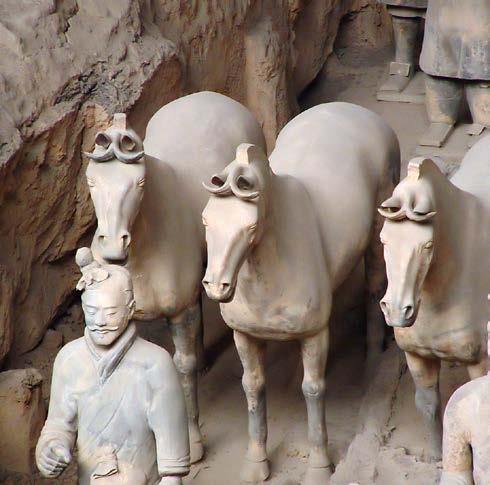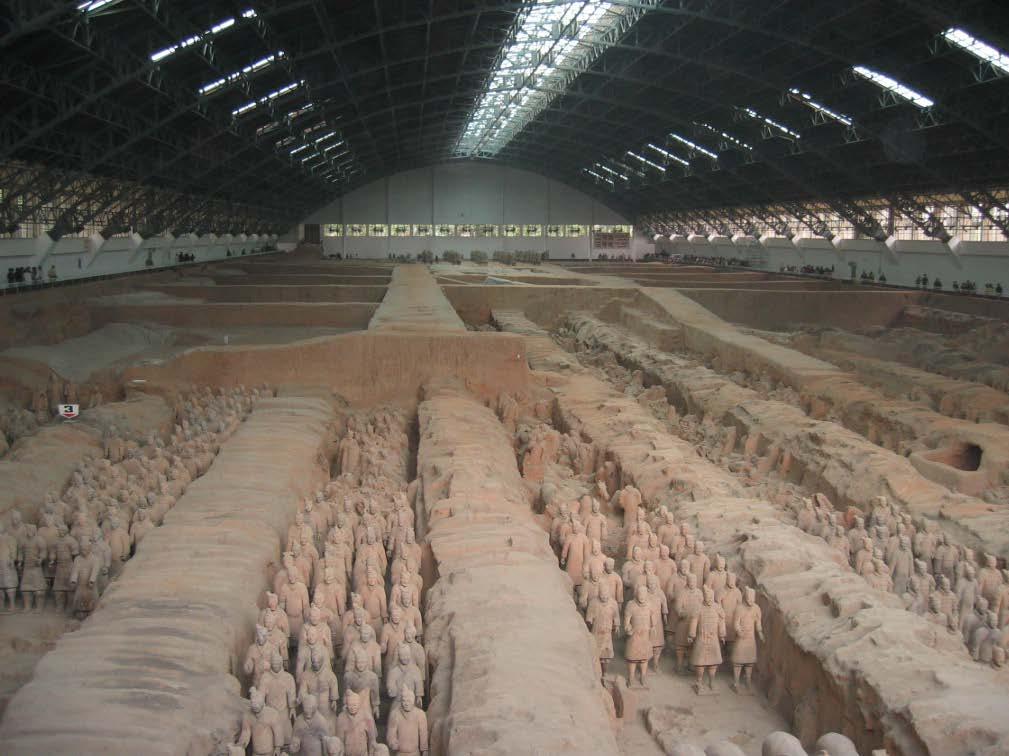
2 minute read
The Terracotta Warriors
As we relaunch tours to China from March, we take a closer look at one of the world’s greatest archeological discoveries of all time
WORDS BY EMMA CALLEY

In 1974, Chinese farmers were digging a well when they encountered a life-sized soldier made of clay. Confused and intrigued, they reported their findings to the government who promptly sent scientists to the site in Xi'an to begin further excavations. Unbeknownst to the farmers, this solitary figure was part of an entire army of life-size soldiers, horses and chariots. The remarkable discovery of the Terracotta Army is still considered one of the biggest in archeological history. It’s thought that the army was constructed to guard the tomb of Emperor Qin in the afterlife, and to ensure he would have the same imperial status and power in death that he enjoyed in life. It’s estimated that the tomb took almost forty years and 700,000 people to construct. Although the site is open to the public, it's important to note that it is an active dig site; archaeologists believe there are an additional 6,000 figures yet to be uncovered.
The rows and rows of warriors are a phenomenal sight to behold, especially when you consider that each figure was created by hand without the use of tools. Take a closer look and you’ll notice that no two soldiers are alike—each terracotta figure has been moulded with intricate details like facial expressions, hairstyles, and gestures. This, in addition to their organisation by military rank, suggests that the figures were modelled after real people. In addition to the nearly 2,000 soldiers, archaeologists discovered chariots, cavalry and weapons, which are also on display across the three pits.








